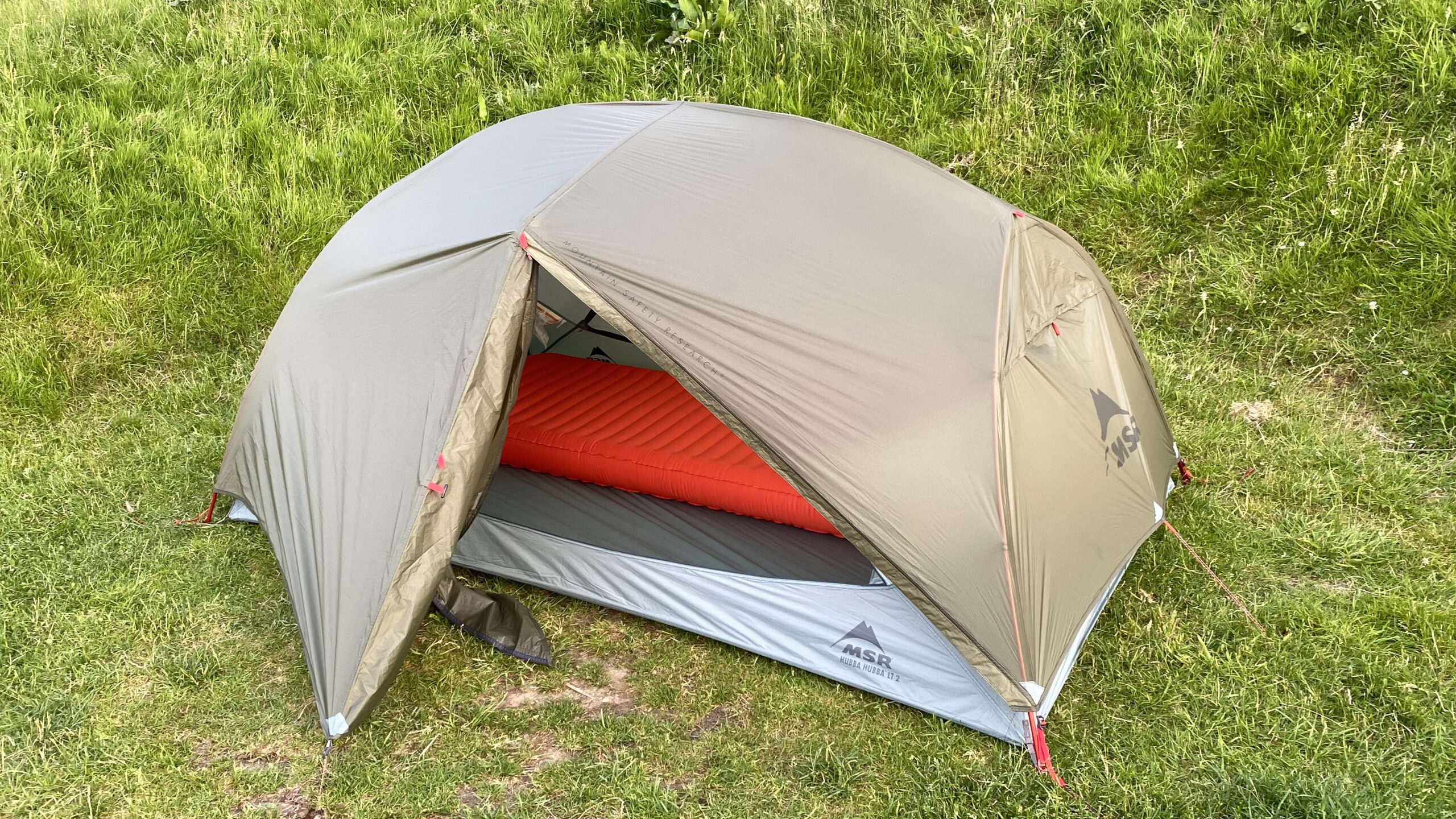Getting my hands on MSR’s new Hubba Hubba LT tent several months before it’s officially released in Europe felt a bit like pushing to the front of a queue at a big gig or popular club… but I wasn’t going to let that stop me. And besides – you want to know what to expect when one of the world’s most iconic tents is re-launched, right?
If you’re not familiar with the Hubba Hubba – a tent so good they named it twice – you might be wondering what all the excitement is about. Isn’t this just another lightweight shelter? Well, no, not really – not if you’ve spent years wandering trails and hanging out in crags and campsites where the Hubba Hubba has been an ever-present feature for two decades, an immediate indicator that the people within it know what they’re doing in the outdoors and value quality kit.
Hubba Hubba History
Back in 2004, Mountain Safety Research (an American brand better known as MSR) launched the first Hubba Hubba tent, and promptly transformed overnight hiking experiences for a generation of multiday walkers, thru hikers and backpackers.
A freestanding hub-style shelter, with a semi-geodesic dome shape, the original Hubba Hubba was the first widely available 3-season packable tent to offer a large living space with decent headroom, plus two doors and spacious vestibules – all while being lightweight enough to take hiking and remaining easy and quick to pitch.
Besides the two-sided symmetrical hub, a major innovation was the ‘brow pole’, a short pole positioned perpendicularly to the main cross pole, which pushed the side of the structure out, vastly improving the useful space in both the inner tent and the vestibules. This, combined with the use of cutting-edge materials and some super smart design, resulted in a shelter that provided reliable 3-season protection from the elements, plus excellent comfort levels and enough covered outdoor space for hikers to store their walking boots and backpacks, and use a camping stove in rough weather. It was a game changer, and would go on to be one of the most popular backpacking tents of all time.
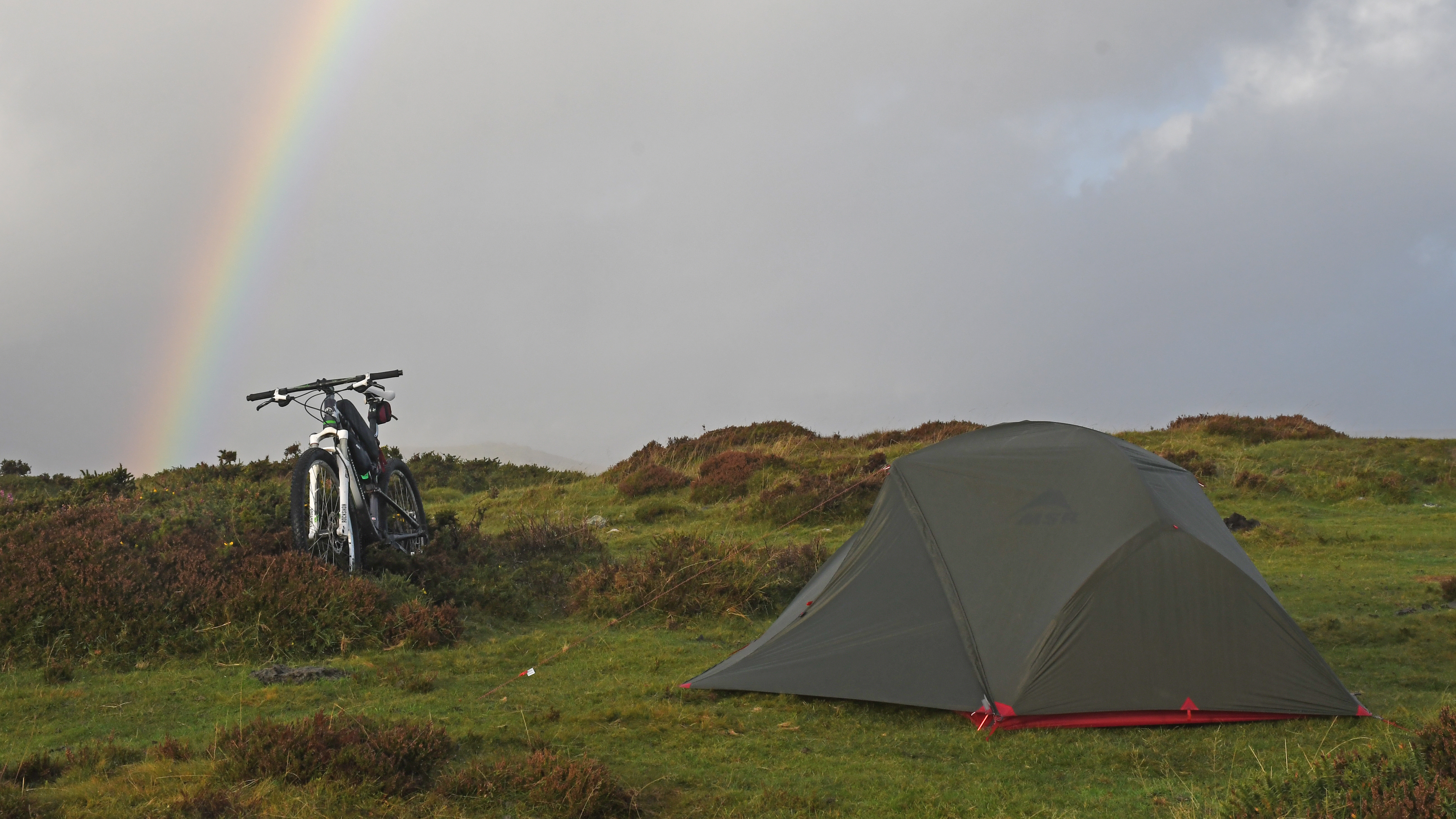
Hubba Bubbles
For the next 15 years, MSR incrementally evolved the design of the Hubba Hubba, adding little innovative elements such as internal drying/hanging lines, a loft and rain gutters on the fly, carefully refining what many regard to be the classic 2-person shelter to arrive at the MSR Hubba NX, which came out in 2019. The brand also adapted the Hubba design to produce a 1-person tent for solo campers , launched a 3-person Mutha Hubba, a 4-person Papa Hubba, and developed a 1-person and 2-person iteration of the tent specifically for bikepackers.
Earlier this year, however, came the exciting news that, after two decades, MSR had decided to substantially reconfigure the Hubba Hubba. The new design – the LT – would be available in January 2026 (in Europe, and a bit earlier in the United States), with 1-person, 2-person and 3-person versions available.
I was lucky enough to get a preview of the new designs at the Outdoor Trade Show in June, but having been teased with a tantalising glimpse, I couldn’t wait another six months to properly test this exciting new-generation tent out. So I travelled to Midleton in County Cork in the Republic of Ireland, where Cascade Designs (MSR’s parent company) have their European HQ, to get my hands on an early sample of the Hubba Hubba LT 2-Person Backpacking Tent, and then I took it out into the wilds in the Wicklow Mountains. This is what I found:
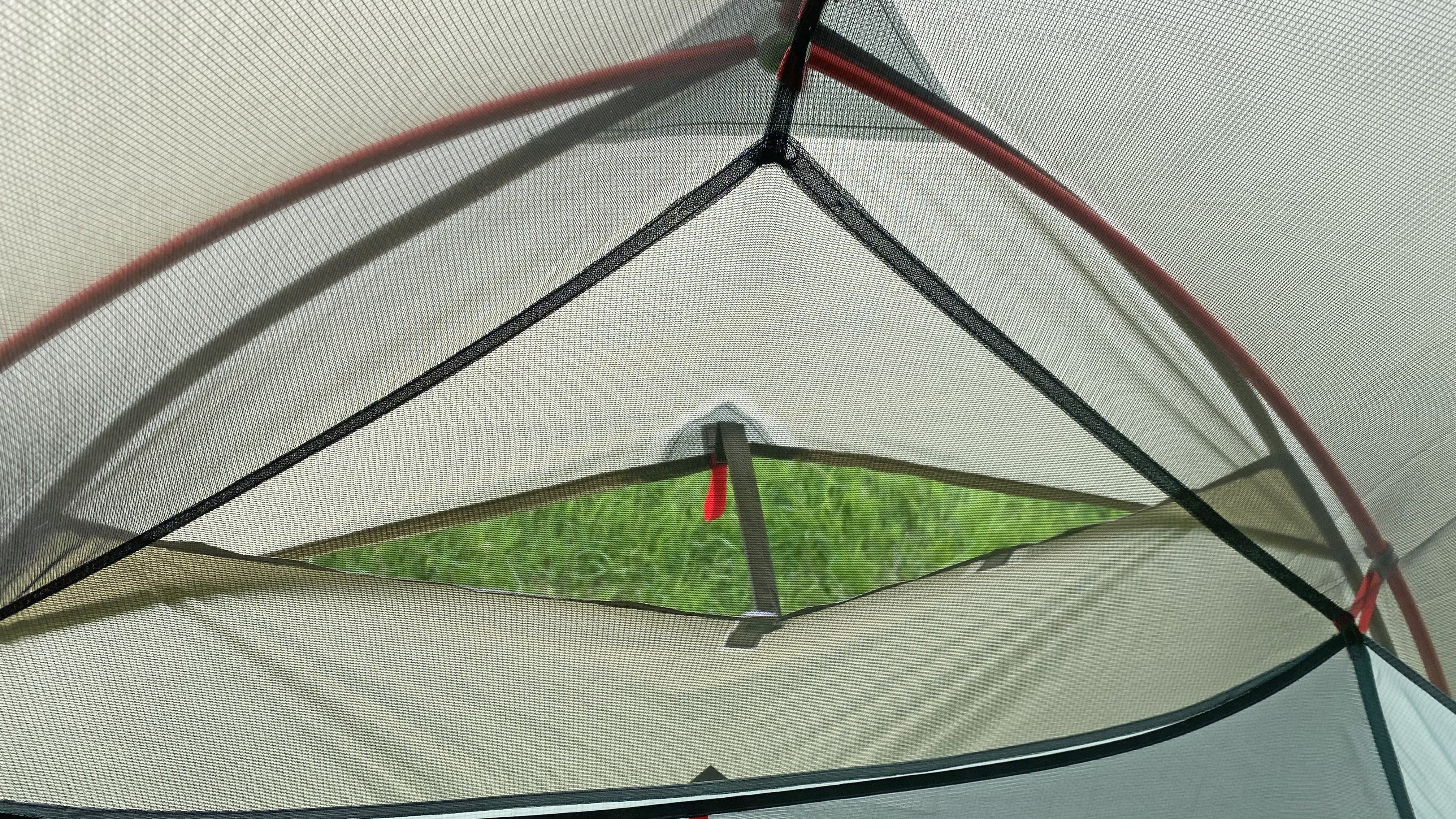
Ch ch ch changes
Before we get overexcited – please note that, at first glance, the Hubba Hubba LT doesn’t immediately look dramatically different to the NX – at least not on the outside.
It retains essentially the same shape and the flysheet’s neutral color scheme is a subtly different shade (the U.S. and European versions differ from one another in color slightly too). And to be fair, these elements didn’t need to be tinkered with – the symmetrical shape works well for dealing with wind while offering good amounts of living space, and the natural color is ideal for discretion when you’re wild camping – so why change them?
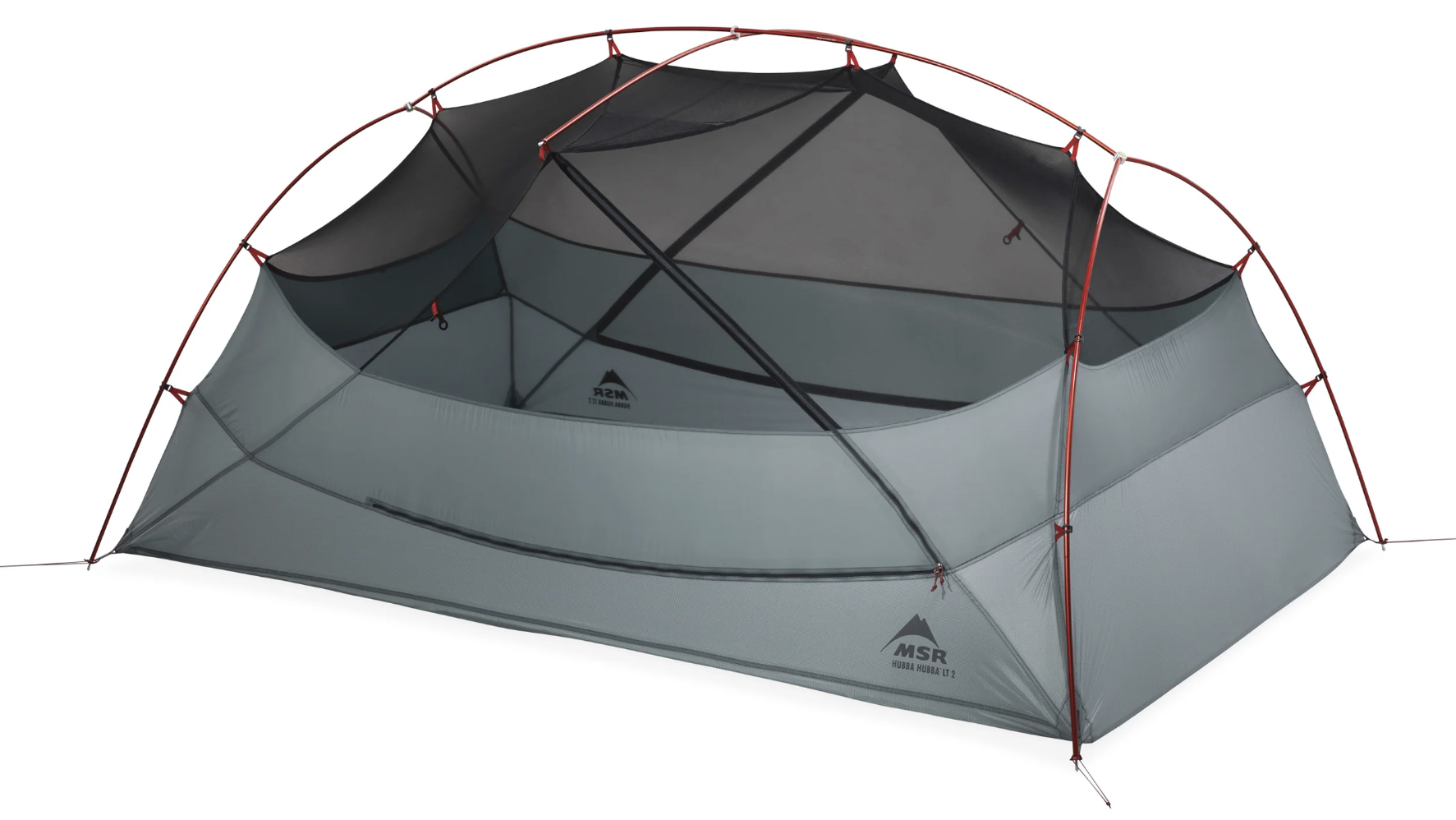
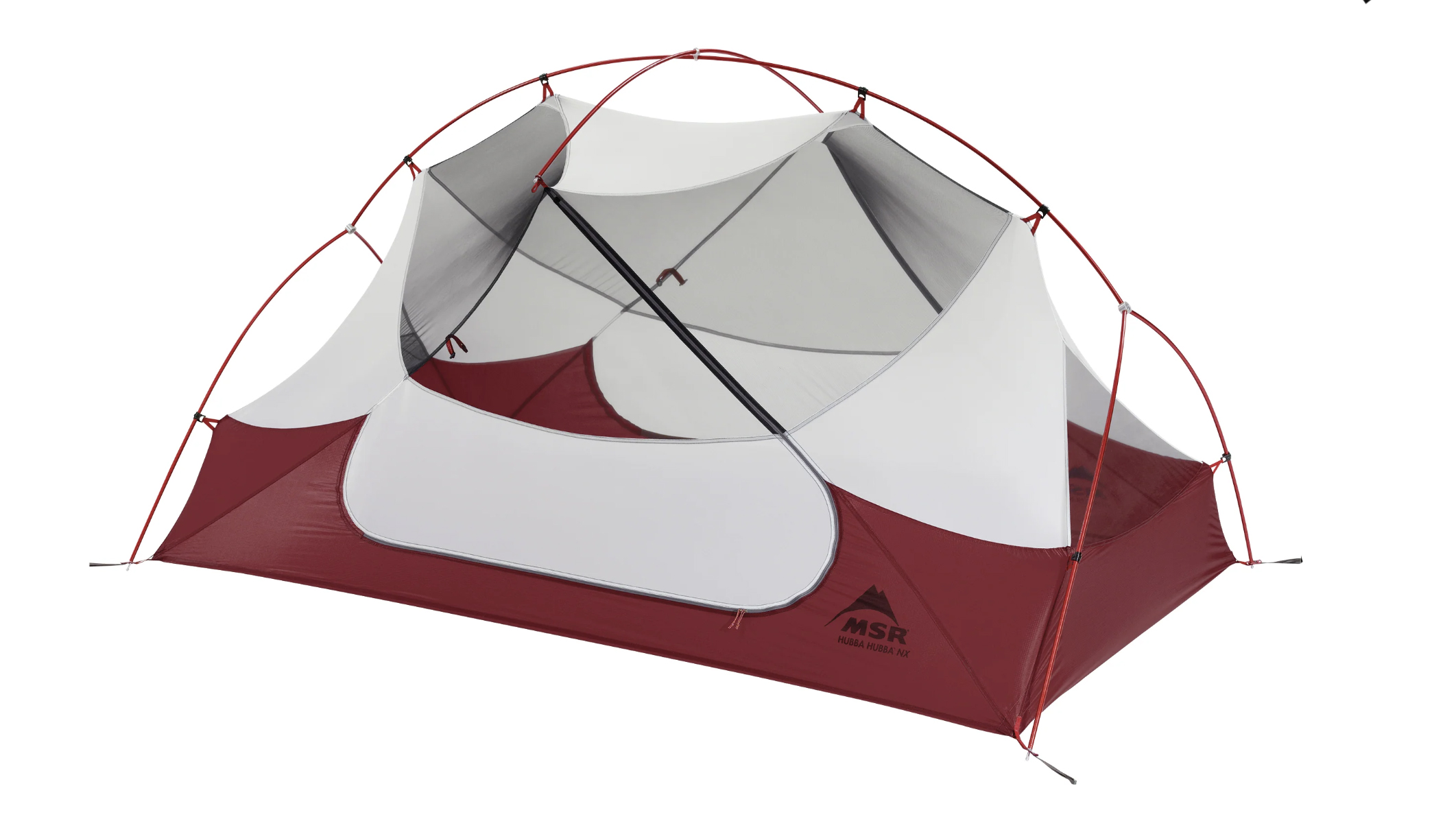
There have been some changes to the design of the design of the DAC pole skeleton, however, with the four legs in the >–|–< shape being lengthened, and the brow pole being slightly extended, adaptations that have increased the internal living space and the usefulness of the vestibules. The corner hardware, where the ends of the poles slot into the feet at the four corners of the groundsheet, has also been upgraded, so the components are now all metal and highly durable. The new pegs are lightweight, but very sturdy, ‘mini groundhog’ stakes.
And although it looks similar, the materials used in the flysheet (and the floor and internal mesh walls) are now solution-dyed, a process that reduces carbon emissions by a minimum of 80% compared to the fabrics previously used by MSR (and other brands). The window vents have also been enhanced.
It’s worth noting, however, that while the flysheet retain a hydrostatic head (HH) rating of 1,200mm (the same as the NX), the HH rating of the tent body (ground sheet) has dropped from 3000mm on the NX, to 1,800mm on the new LT. For a hardier (but heavier) tent, have a look at the Hubba Hubba HD, which includes a rainfly with a HH of 3,000 and groundsheet with a 6,000mm rating.
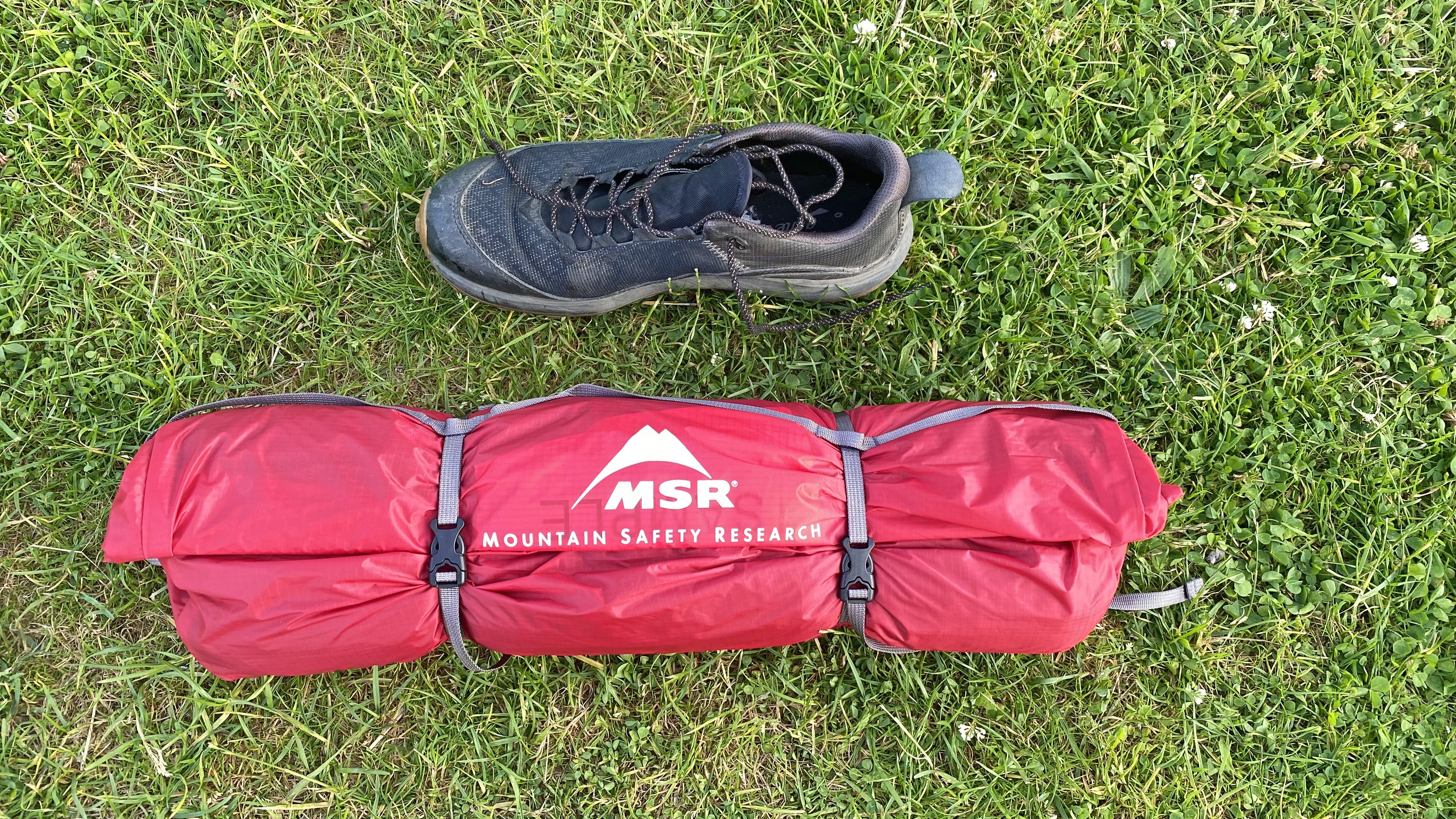
In numerical terms the increases might seem minor – with the new pole design you get 1in (2cm) extra head space, and the rectangular inner has 4in (11cm) additional length and 2in (5cm) extra width (to give you 32 sq ft of space total) but these changes make a tangible difference to the comfort levels.
As soon as I pitched the LT, rolled out my camping mat and sleeping bag, and stashed my stuff in the vestibule, the tent felt substantially larger than the NX. And as I got changed out of my hiking pants and crawled into bed that evening, I certainly appreciated the additional headroom.
I was testing the 2-person Hubba Hubba LT on my own this time, but you can very easily lay two large rectangular Thermarest Neoloft camping mats side by side in this tent (I’ve tried it), which is more than can be said for the vast majority of 2-person shelters. (As an aside, the new 3-person Hubba Hubba LT can comfortably work as a 4-person backpacking tent, if you use mummy shaped sleeping pads.)
The vestibules are also longer, and although they are slightly narrower, the useful amount of porch space has been increased, which comes in extremely handy when you are storing muddy hiking shoes and walking boots, or boiling some water for a brew.
Best of all, because of the change in fabric used for the inner, this size upgrade has been achieved for less of a weight penalty, with the LT weighing just 3lb 6oz (1.54kg), as compared to 3lb 13oz (1.72 kg) for the NX.
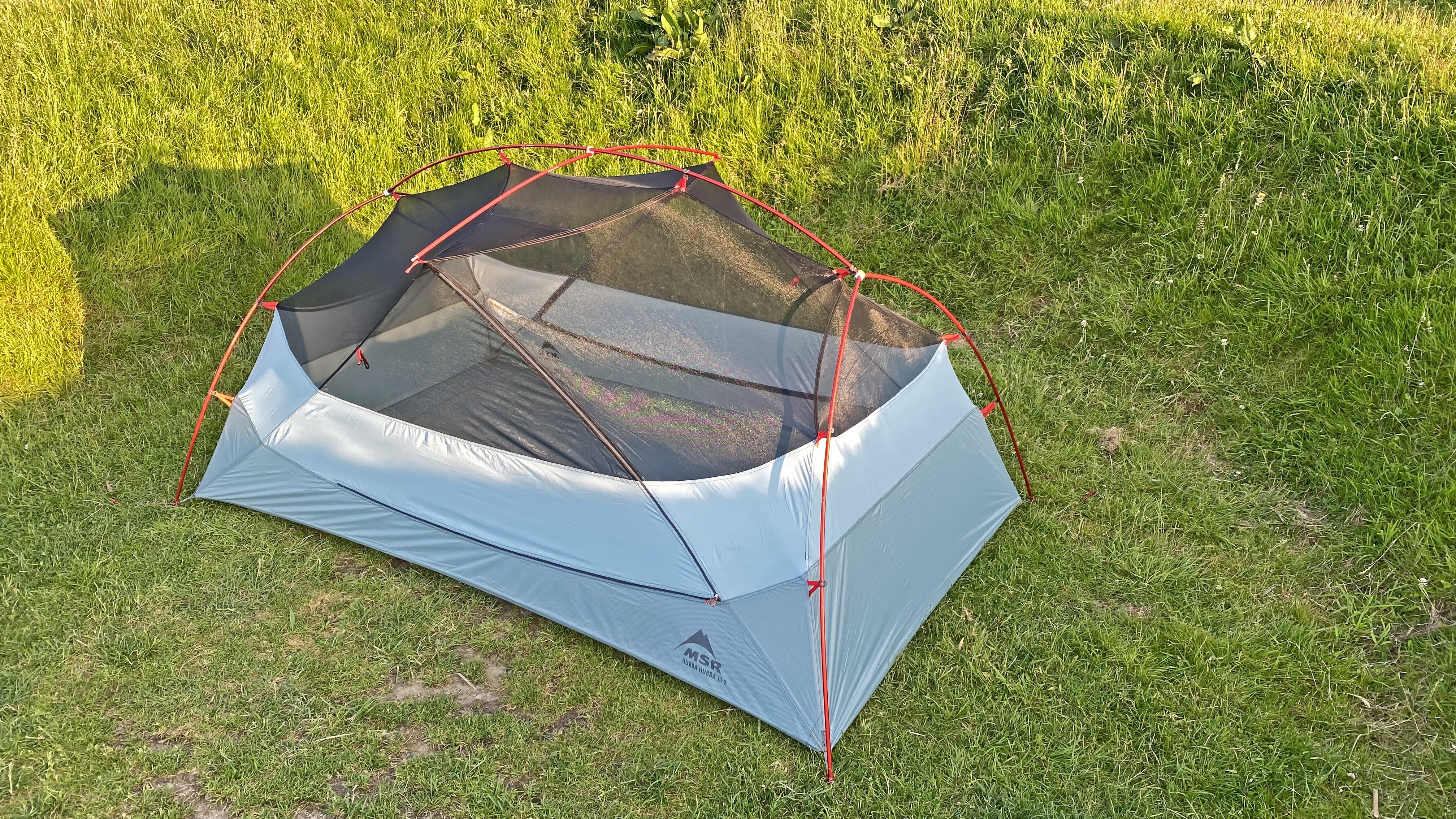
The main tent is now made mostly from solution-dyed micromesh, which is very lightweight but provides excellent breathability (vastly reducing condensation) and bug protection. You can pitch the tent and leave the flysheet off on cloud-free nights, to enjoy some stargazing before you drift into a slumber.
I was camping in the middle of a heatwave that was sizzling (even in Ireland), and I was very comfortable in a lightweight 2-season sleeping bag, but I can’t help thinking the use of this mesh will affect how warm the Hubba Hubba is during the colder months, lowering the internal temperature – this is something I’ll monitor as the seasons change.
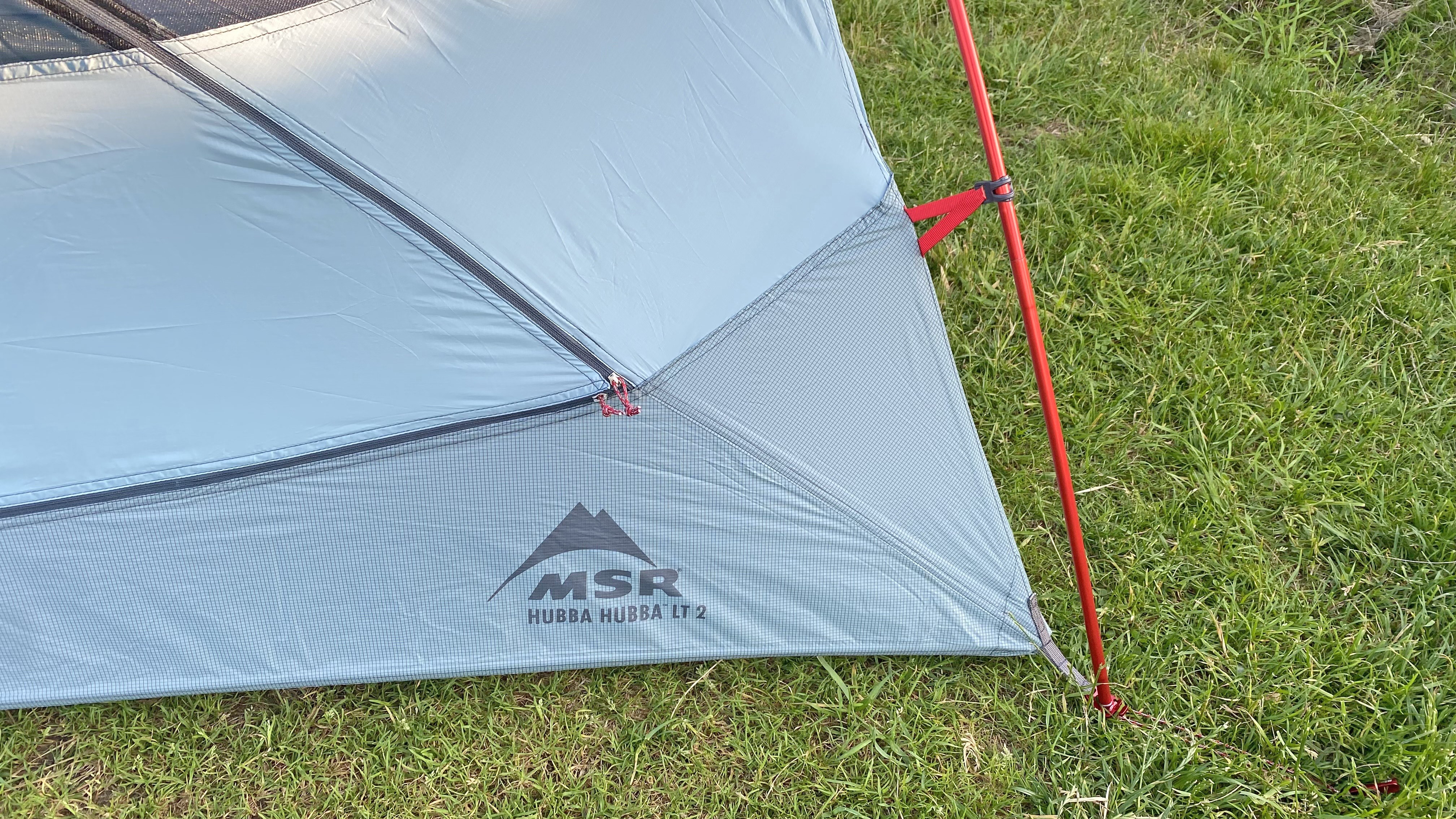
Another alteration that becomes immediately obvious when you start looking more closely at the LT is to the internal doors. Instead of the old-style D-shape doors on the inner tent, there is a triangular shaped opening, with two separate zips meeting at the point of the right angle. The benefit of this is that the zips are more durable, easier to use with one hand, and the zipper always ends up in the same place, so you know exactly where to find it without scrambling around with a headlamp in the middle of the night.
One other change I noticed on the inside of the tent is the addition of cable ports in the wall pockets, so you can have things like mobile phones and smartwatches neatly plugged into powerpacks for recharging, without wires dangling all over the place.
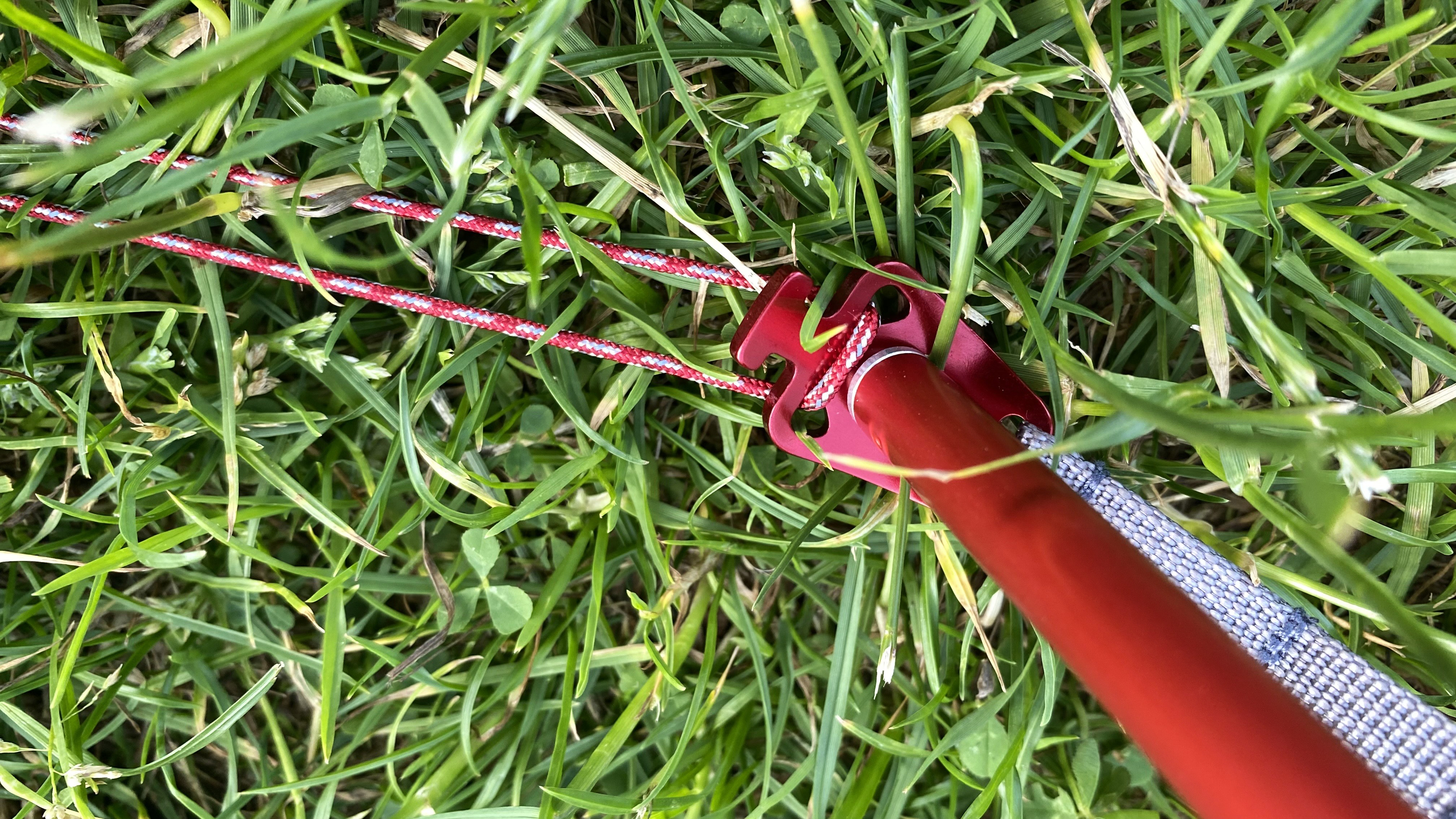
I have many more adventures planned involving the new LT2, during which I will test the thermal properties of the redesigned inner tent (outside of a heatwave), and I will be uploading a full review here in due course.
You can purchase the Hubba Hubba LT2 in the United States now, and it will be available in the UK and across Europe from 1 January 2026. In the meantime, look out for deals on all iterations of the Hubba Hubba NX, which remains a superb backpacking tent.
